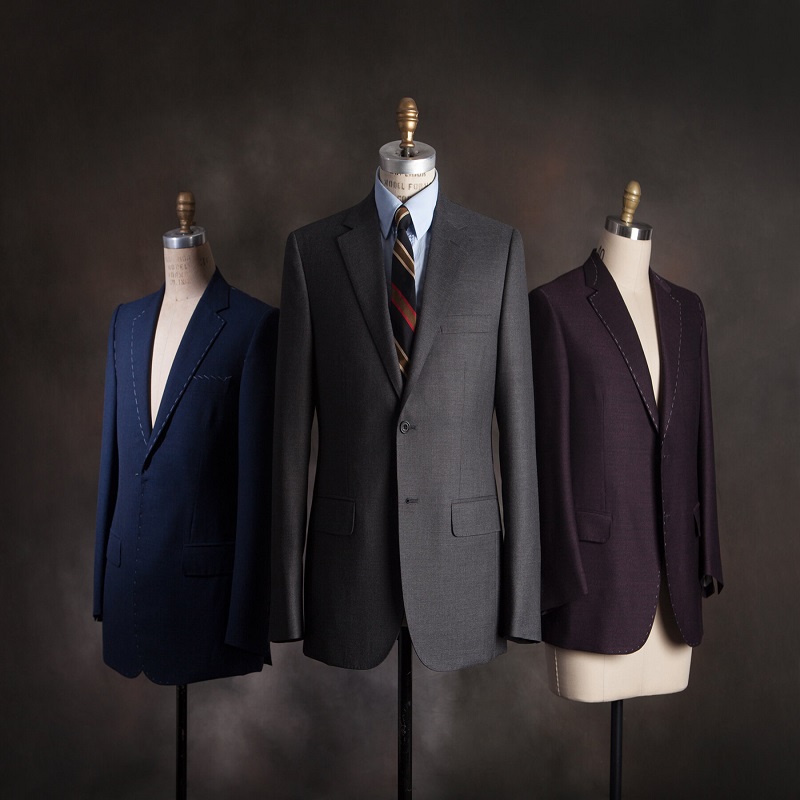Introduction to Suit Alterations
How to tailor a suit? Finding the perfect fit for a suit can be a challenge. Not all off-the-rack suits will fit your body perfectly, leading to a need for alterations. Whether it’s a tailor-made garment or a store-bought piece, understanding suit alterations is essential for a sharp look. This section will guide you through the basics of tailoring a suit to ensure a custom-fit appearance.

Alterations can range from simple adjustments to more complex changes. Some common alterations include shortening sleeves, tapering trousers, and adjusting the jacket waist. Often, people are surprised at the transformation a well-tailored suit can undergo. Learning how to tailor a suit involves understanding the structure of the garment and the specific points where a tailor can make adjustments.
When considering alterations, keep in mind the limitations of the fabric and the original cut of the suit. Letting out seams require extra fabric, which not all suits have. Taking in areas like the chest and midsection can enhance the fit but need careful attention to detail to maintain the suit’s balance.
Having suits altered is a cost-effective way to update your wardrobe without the need for purchasing new garments. It can also extend the life of a suit as your body changes over time. Quality tailoring can adjust to these changes, allowing for a better fit and more comfortable wear.
In the following sections, we will dive into more detail on specific alteration needs and the tailoring process. By understanding these essentials, you’ll be ready to work with a tailor to achieve the level of fit and finish that makes tailored suits stand out.
Identifying Common Suit Alteration Needs
Identifying the exact adjustments required for a suit is the first step to perfect tailoring. Whether for aesthetic reasons or due to changes in your body, common alteration needs can dramatically improve a suit’s fit. Here’s a breakdown of typical tailor requests.
Shoulders and Collar Adjustments
Correcting the shoulders can alter a suit’s entire silhouette. Adjustments here may include reducing excess fabric for a neater look or modifying shoulder pads. The collar might need changes for a gap-free neckline.

Chest and Stomach Area Tailoring
A suit that fits well in the chest and stomach accentuates your shape. Tailors can slim down the midsection or provide more room, depending on your needs, ensuring a comfortable, stylish fit.
Sleeve Length and Fit Modifications
Sleeve adjustments make a significant impact on a suit’s appearance. Ensuring sleeves end at the wrist and allow a hint of shirt cuff to show is key. Slimming or widening can refine the look.
Jacket Length and Proportion Management
The length of your suit jacket influences overall balance. Shortening may be needed to achieve proportion, but care is taken not to disrupt the positioning of pockets and buttons.
Trousers Adjustments: Waist, Rise, and Leg Shape
Trousers may need a nip or tuck at the waist, a tweak in the rise, or alterations to the leg’s shape. These fixes can ensure comfort and a clean drape over shoes.
Other Miscellaneous Alterations
Lining removal, button changes, and fixing minor wear and tear are other tasks a tailor can undertake, each contributing to the suit’s longevity and your comfort.
The Process of Suit Alteration: What to Expect
Embarking on the journey of suit alteration, it’s crucial to know what to anticipate. This knowledge will ease any concerns and clarify the journey ahead. Here’s what typically happens during the alteration process.
Consultation and Fitting
Your first step is a fitting session with your tailor. During this meeting, express your concerns and desired adjustments. The tailor will then take measurements and mark the fabric using tailor chalk. These marks are guides for adjusting the suit to your body shape.
The Tailoring Work
After the fitting, the tailor works their magic. They may let out seams for more room or take them in for a slimmer fit. Sleeve and trouser lengths may also get altered. Remember, complex changes like shoulder alterations might be costly due to the intricate work involved.
Final Fitting and Adjustments
Once alterations are done, a final fitting is necessary. Try on the altered suit to ensure each change is to your liking. If not, your tailor can make minor tweaks.
Picking Up Your Suit
After the final fitting, you’ll pick up your suit. It should now fit perfectly, demonstrating the tailor’s skill and the power of good alterations. You now have a suit that looks custom-made, without the high cost of a bespoke piece.
Suit alteration is a step-by-step process. It involves a detailed evaluation of your suit’s current fit, a professional tailor’s skilled adjustments, and final tweaks to guarantee perfection. Understanding this process is key to achieving the sharp look you desire from your tailored suits.

When to Choose Alteration Over Buying New
Deciding between altering an existing suit or buying a new one can save time and money. Here’s when you should consider alteration:
- Weight Change: If you’ve gained or lost a few pounds, altering can adjust the fit perfectly.
- Minor Wear: Small issues like loose buttons or fraying can be fixed easily by a tailor.
- Budget Constraints: Alterations are generally less costly than a new high-quality suit purchase.
- Sentimental Value: For suits with emotional significance, it’s worth the effort to alter instead of replace.
- Quality Fabric: If your suit is made from premium material, tailoring can refresh its look.
- Style Upkeep: Sometimes a slight tweak is all that’s needed to modernize the suit’s style.
- Time Factors: Alterations can be quicker than shopping for and tailoring a new suit.
- Sustainability: Choosing alterations contributes to a more sustainable fashion practice.
Consider your lifestyle, the frequency with which you wear the suit, and future occasions. A tailored piece not only fits you like a second skin but also reflects personal style. However, if a suit is outdated or requires complex restructuring, investing in a new one might be the better choice. Tailoring a suit can be the ideal route for maintaining a crisp wardrobe without the extra cost and time of new purchases. How to tailor a suit is a skill, but knowing when is an art. Choose wisely to maintain elegance and quality in your wardrobe.
Finding the Right Tailor for Your Suit Alterations
Finding a skilled tailor is vital for suit alterations. A good tailor ensures adjustments are precise and suit your style. Here are steps to find the right one for your needs.
Research and Recommendations
Start with online research for local tailors. Look for high ratings and positive reviews. Ask friends and family for their go-to tailors. Personal recommendations are often reliable.
Experience and Specialization
Seek tailors with experience in suit alterations. Check if they specialize in menswear. An expert in how to tailor a suit will offer better results.
Quality of Work
Visit tailor shops and look at their work. Examine finished suits for clean seams and proper fit. High-quality alterations should be undetectable.
Pricing and Turnaround
Discuss costs upfront. While not always cheap, reasonable prices are a good sign. Ask about the time needed for alterations. A good tailor will be upfront about how long it will take.
Communication
Choose a tailor who listens and communicates well. They should understand your requests and offer sound advice. Good communication ensures your suit alterations meet your expectations.

Final Fitting
A final fitting with the tailor checks the suit’s alterations. Ensure that the suit fits perfectly. If not, a good tailor will make needed adjustments.
Finding the right tailor is crucial for suit alterations. Research, inspect their work, and assess their communication skills. A good tailor will make your suit look custom-made. Remember, the perfect fit is worth the search and investment.
